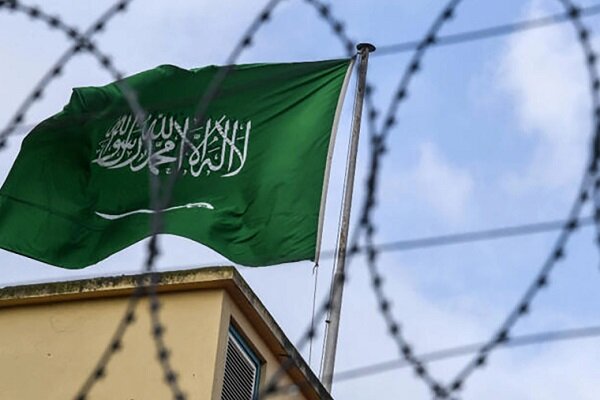
TEHRAN, (MNA) – In post-Assad Syria, Saudi Arabia is like a player forced to move simultaneously across several chessboards.
The fall of Bashar al-Assad and the rise of the terrorist group Hay’at Tahrir al-Sham as the dominant force in Damascus turned the battleground for regional and transregional actors into a geopolitical chessboard. In this context, Saudi Arabia, as one of the traditional pillars of the Arab world, is attempting to navigate between two contradictory poles: on one hand, it is cautiously approaching the new regime in Damascus, whose strategies and orientations remain shrouded in uncertainty. On the other hand, it fears that its silence or passivity might create a power vacuum quickly filled by rivals such as Turkey, Iran, Qatar, and Israel. This contradiction forms the core of Riyadh’s challenges in post-Assad Syria.
In this context, Saudi Arabia is striving to stay at the heart of Syrian developments, aiming to take the pulse of changes and establish itself as an indispensable player in the future dynamics of the Levant. But the key question is this: Can Riyadh simultaneously engage with the Damascus regime and prevent the indirect empowerment of its rivals? This would require navigating a terrain where every step is a potential landmine.
Strategic rivalries: From proxies to transregional powers
The Syrian arena today is a multilayered battlefield where each actor uses its specific tools to secure a share of power. In this landscape, Saudi Arabia is compelled to grapple with multiple fronts at once. First, Ankara—with its unwavering support for the Syrian National Army (SNA) and control over key northern areas such as Afrin, Aleppo, and the Euphrates Shield zone—has not only created a buffer zone along its border but has extended its influence deep into Syrian territory through its proxies. This strategy has tilted the power balance in the north in favor of Turkey, overshadowing Saudi Arabia’s presence in eastern Syria—especially in Arab-populated regions like Deir ez-Zor and Raqqa. Riyadh fully understands that every square meter of Syrian land that falls under Turkish control diminishes its traditional sphere of influence in the Arab world.
Israel’s expansionist approach to security is also among Saudi Arabia's major concerns. Repeated Israeli airstrikes on Syrian positions—reportedly destroying 70 to 80 percent of Damascus’s defense capabilities—are just one part of the power equation. The occupation of Golan Heights and efforts to double the number of Zionist settlers in that region reveal Tel Aviv’s intention to exploit weakened Syria as a launchpad for its own security and expansionist goals. For Saudi Arabia, these developments signal an increased risk of protracted conflict along Syrian borders and a bolstering of the Resistance dialogue. Iran and Qatar also present themselves as rivals, employing asymmetric tools against Riyadh.
Saudi strategy: Fusing economics with diplomacy
To navigate this perilous maze, Riyadh has adopted a three-pronged approach rooted in economic, tribal, and security dimensions. Saudi Arabia is attempting to wield economics as a soft power tool. The ruins left by 12 years of civil war have rendered Syria a country in dire need of substantial financial injection. Riyadh, exploiting this vulnerability, is using generous reconstruction promises as a lever to gain the cooperation of the transitional Syrian government. This strategy offers two key advantages: first, it positions Riyadh as an indispensable actor in Syria’s rebuilding process; second, through economic leverage, it can condition the international legitimacy of Syria’s controversial ruling authority on alignment with Saudi interests.
Meanwhile, in eastern Syria—particularly in Deir ez-Zor, Hasakah, and Raqqa—Arab tribes have become pivotal players in the regional equation. Saudi Arabia is building informal yet influential bases of power by establishing direct ties with tribal leaders and providing them with financial and logistical support.
Saudi Arabia’s security diplomacy is akin to walking a tightrope. On one hand, it supports the formation of an inclusive transitional national government in Syria that resolves the Kurdish issue through peaceful dialogue. On the other hand, it indirectly backs groups opposing the influence of Turkey and Iran. This dual diplomacy reflects Riyadh’s effort to create a “controlled balance of power” in Syria—one that prevents any single rival from achieving total dominance.
Structural challenges: Riyadh’s tall barriers
Despite its range of tools, Saudi Arabia faces structurally rooted obstacles. Short-term engagement with Syria’s transitional government may provide diplomatic maneuvering space, but the long-term empowerment of that government could turn into a nightmare for Riyadh.
The rivalry with Qatar also constitutes a kind of proxy war across media and lobbying platforms. While Riyadh enjoys political and economic superiority within the Persian Gulf Cooperation Council, Qatar leverages international media like Al Jazeera and invests in civil institutions to push its own narrative of the Syrian conflict.
Conclusion
In post-Assad Syria, Saudi Arabia resembles a player forced to move simultaneously on multiple chessboards. On one hand, it must engage with the new regime in Damascus to cement its position as a vital contributor to Syria’s reconstruction. On the other hand, it cannot afford to ignore Turkey’s ambitions, Israel’s expansionist policies, or Qatar’s potential influence. Riyadh’s current strategy appears fragile due to the inherent fragmentation of the Syrian crisis.

No comments:
Post a Comment